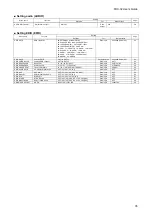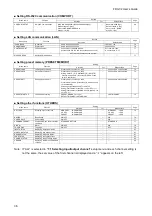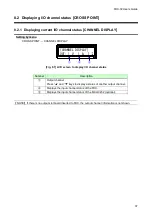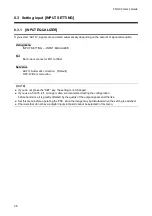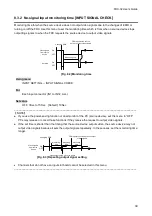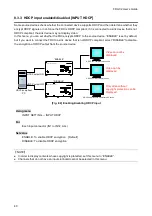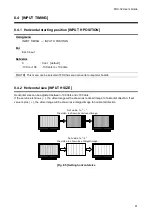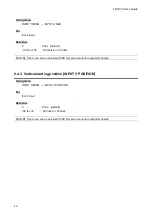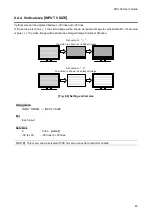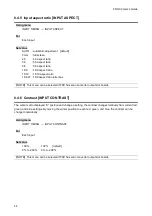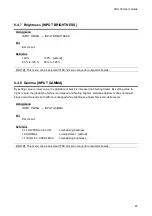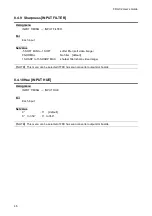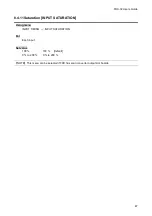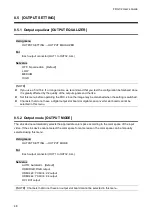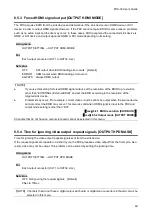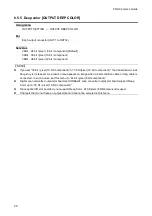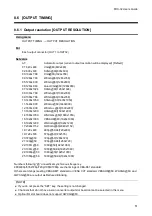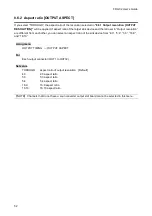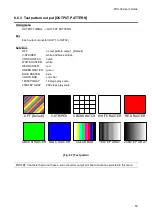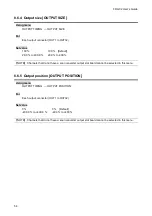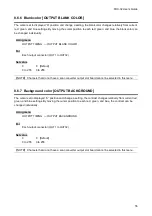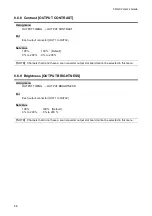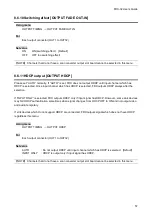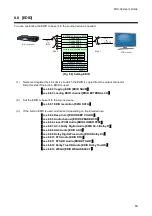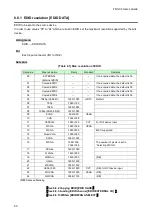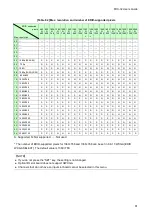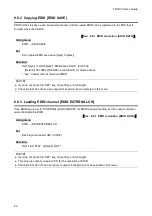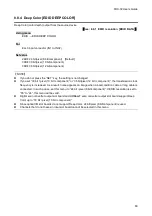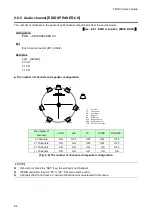
FDX-32 Users Guide
49
8.5.3 Forced HDMI signal output [OUTPUT HDMI MODE]
The FDX acquires EDID from the sink device and determines if the sink device is an HDMI device or DVI
device in order to output HDMI signals. However, if the FDX cannot acquire EDID for some reason, problems
such as no audio input and the like may occur. In these cases, FDX recognized the connected sink device is
HDMI or DVI device and output signal as HDMI or DVI mode depending on its setting.
Using menu
OUTPUT SETTING → OUTPUT HDMI MODE
For
Each output connector (OUT1 to OUT32, ALL)
Set value
OFF : DVI output when EDID loading error occurs [Default]
ERROR : HDMI output when EDID loading error occurs
ALWAYS : Always HDMI output
【
NOTE
】
●
If you use this setting for forced HDMI signal output, set the resolution of the EDID to a resolution
other than
“EXTERNAL (External EDID)” and set the EDID according to the resolution of the
targeted sink device.
●
Problems may occur, if for example, correct video or audio cannot be output when the source device
cannot correct the EDID may occur. This menu is valid when HDMI signal is input to the FDX and
output mode setting is other than
“DVI”.
【
See
8.8.1 EDID resolution [EDID DATA]
【
See
8.5.2 Output mode [OUTPUT MODE]
Channels that do not have an output slot board cannot be selected in this menu.
8.5.4 Time for ignoring video output request signals
[OUTPUT HPD MASK]
Time for ignoring the video output request signals sent from the sink device.
If the request signals are repeated in a short cycle, the FDX processes video output from the first cycle. As a
result, video may not be output. This problem can be solved by setting the ignoring time.
Using menu
OUTPUT SETTING → OUTPUT HPD MASK
For
Each output connector (OUT1 to OUT32, ALL)
Set value
OFF: Not ignoring the request signals [Default]
2Sec to 15Sec
【
NOTE
】
Channels that do not have a digital output slot board or digital scan converter slot board cannot be
selected in this menu.

